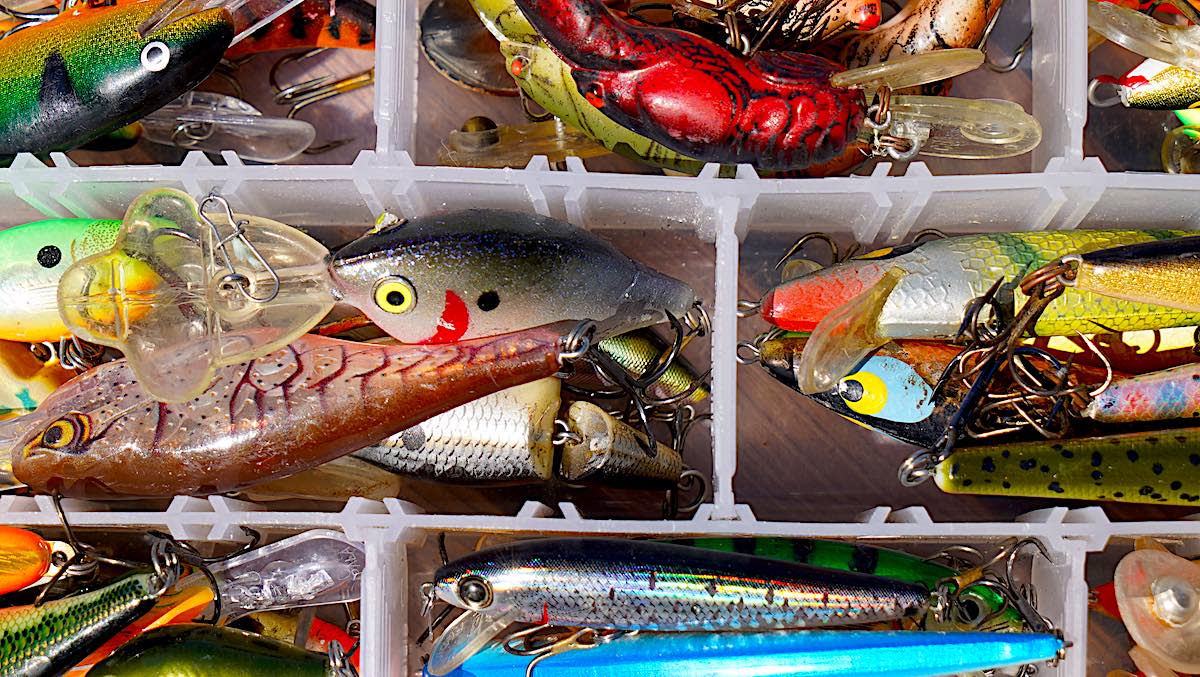High-Performance Bass Lures: Seasonal Color Selection Secrets Revealed
Explore the Tricks Behind Efficient Bass Lures to Boost Your Angling Experience
Comprehending the complexities of bass Lures can greatly affect fishing success. Various Lures offer distinct functions, from crankbaits created for broad insurance coverage to jigs that target specific structures. The performance of these Lures usually rests on variables such as color, activity, and seasonal patterns. By mastering these aspects, anglers can unlock a much more fulfilling experience. Yet, the question remains: which strategies will yield the very best results on the water?
Recognizing Bass Behavior and Environment
Comprehending the habits and habitat of bass is vital for fishermens looking for success on the water. Bass are flexible fish located in numerous freshwater settings, including fish ponds, lakes, and rivers. They tend to like locations with structure, such as immersed rocks, fallen trees, and marine vegetation, which offer sanctuary and hunting premises.
Seasonal patterns substantially influence their actions; in warmer months, bass usually live in shallow waters, while they pull back to much deeper areas during colder periods. Bass Fishing Lures. Their feeding behaviors are opportunistic, with a diet being composed mostly of smaller fish, insects, and crustaceans
Time of day also plays a function; bass are a lot more energetic during late nights and early mornings. Weather can influence their behavior also, as overcast days may motivate superficial feeding, whereas intense sunshine frequently drives them to seek cover. Recognizing these patterns outfits anglers with the knowledge required for efficient fishing approaches.
Kinds Of Bass Lures and Their Makes use of
A range of bass Lures are vital tools for anglers aiming to attract this popular video game fish. These Lures can be categorized right into several kinds, each serving distinct purposes. Crankbaits, created to mimic the swimming action of baitfish, are reliable for covering huge locations quickly. Spinnerbaits, including rotating blades, produce vibrations and flashes that can lure bass hiding in cover. Jigs, with their hefty heads and weedless design, are perfect for bottom angling, allowing fishermens to existing lure near frameworks where bass frequently prowl. Soft plastics, such as worms and animal lures, supply flexibility and can be set up in multiple means to adjust to varying problems. Topwater appeals, like poppers and frogs, are best utilized throughout low-light hours when bass are actively eating the surface. Each type of lure plays a vital function in boosting fishing experiences and boosting the probability of effective catches.

Color and Design: What Brings In Bass?
What factors influence bass destination to particular attraction shades and designs? The interaction of light, water quality, and the natural surroundings plays an essential duty. Brilliant shades, such as chartreuse and orange, can catch a bass's eye in murky waters, while a lot more suppressed tones like blues and greens may stand out in clear conditions.
Design elements, including form and motion, likewise substantially influence bass tourist attraction. Lures that simulate all-natural prey, such as baitfish or crawfish, are especially effective. Furthermore, the existence of practical information, like scales or fins, improves the realistic look, further luring bass.
Mental aspects, such as a bass's feeding routines and territorial reactions, must not be overlooked. In particular situations, strong layouts can prompt a reaction from hostile bass, while subtle variants can interest much more mindful fish. Inevitably, comprehending shade and layout subtleties is important for maximizing appeal efficiency.
Matching Lures to Water Conditions
Picking the appropriate lure entails greater than just design and color; water conditions play a substantial role in establishing one of the most efficient alternatives. Aspects such as water quality, depth, and temperature level directly affect bass habits and their feeding patterns. In clear water, natural colors and subtle discussions tend to be much more effective, while dirty conditions may require brighter, a lot more lively Lures that can stand out.
Temperature level likewise impacts bass task; throughout warmer months, faster-moving Lures can elicit strikes, whereas cooler temperature levels may need slower, more calculated presentations. Furthermore, much deeper waters often demand larger Lures that can get to the preferred depth, while superficial areas are much better website here fit for lighter, surface-oriented options.
Methods for Reliable Draw Presentation
Grasping the methods for effective lure discussion can considerably improve fishing success. Fishermens need to focus on the rate and rhythm of their retrieves, adjusting them to simulate the all-natural movement of prey. A stable obtain jobs well for several lures, but incorporating pauses can cause strikes from much more mindful fish. Additionally, differing the deepness of the attraction is essential; using different spreading angles and adjusting the reel can help target fish at various midsts.
Using a combination of skill discussions, such as twitching or dragging the check my blog lure throughout all-time low, can likewise work. It is necessary for anglers to review the water and change their methods based on visibility and structure. Moreover, providing Lures near cover, like immersed rocks or plants, frequently generates much better outcomes, as bass tend to seek sanctuary. Inevitably, explore different strategies will certainly cause an extra satisfying angling experience.
Seasonal Considerations for Draw Selection
Seasonal changes dramatically influence bass habits and attraction performance. As water temperatures vary, fishermens must change their lure selections to line up with pre-spawning and post-spawn conditions. Recognizing these seasonal patterns can enhance fishing success by targeting bass at their most active times.
Seasonal Water Temperature Effects
As water temperatures rise and fall throughout the year, bass behavior and feeding patterns transform, influencing the efficiency of different appeals. During colder months, bass tend to end up being sluggish, preferring slow-moving Lures that mimic struggling victim. On the other hand, as temperature levels climb in spring, bass become a lot more active, making much faster, much more hostile Lures effective. Mid-summer sees bass looking for much deeper, cooler waters, demanding making use of Lures that can get to these midsts. As temperature levels start to decrease in loss, bass frequently feed heavily to prepare for winter season, making flexible Lures that can imitate a selection of forage types specifically effective. Understanding these seasonal temperature level effects enables anglers to pick proper Lures that line up with bass habits, maximizing their angling success.
Pre-Spawning Lure Choices
What aspects influence the selection of Lures throughout the pre-spawning period for bass? Anglers need to think about water temperature, weather, and the bass's feeding habits. As temperatures climb and days extend, bass become more energetic and aggressive, motivating a change in their feeding patterns. During this time around, entices that mimic the all-natural victim of bass-- such as shad or bluegill-- are specifically reliable. Popular choices include spinnerbaits, lipless crankbaits, and hop over to these guys jigs, which can be fished at numerous depths. Furthermore, anglers must concentrate on locations with cover, such as submerged plants or rocky structures, as these places often attract pre-spawn bass. Best Bass Lures South Africa. Understanding these aspects can considerably improve the opportunities of an effective fishing expedition during this crucial seasonal phase
Post-Spawn Techniques Adjustments
Although post-spawn bass display various habits than during the pre-spawn stage, efficient appeal option continues to be crucial for anglers intending to target them successfully. After generating, bass typically become sluggish and look for much deeper waters, making it crucial to change attraction selections appropriately. Fishermens must take into consideration utilizing slower-moving baits, such as jigs or soft plastics, which can attract bass that are less aggressive. Crankbaits with a subtle activity can also be efficient, enabling a slower discussion that simulates the natural post-spawn forage. In addition, angling near structure, such as immersed greenery or rocks, can raise opportunities of success. By recognizing these seasonal modifications, fishermens can improve their angling experience and boost their catch rates throughout the post-spawn duration.
Often Asked Questions
How Do I Select the Right Rod for Bass Angling?
To pick the ideal pole for bass angling, one need to think about the rod's size, power, and action. A tool to medium-heavy rod, around 6 to 7 feet, is frequently excellent for adaptability and control.

What Is the very best Time of Day to Catch Bass?
The best time of day to capture bass is usually early morning and late afternoon. Throughout these durations, bass are a lot more active, feeding near the surface area, making them much easier targets for anglers making use of reliable lures.
Exactly How Do Weather Impact Bass Fishing Success?
Weather conditions dramatically influence bass angling success. Warmer temperature levels and cloudy skies commonly motivate bass task, while cold spells can trigger sleepiness. Rain can additionally boost feeding habits, making it vital for anglers to adjust their methods as necessary.
Can I Make Use Of Lures for Various Other Fish Variety?
Yes, entices developed for bass can additionally work for other fish species. Nonetheless, choosing the proper dimension, color, and activity according to the target species and their feeding routines remains essential for success.
What Prevail Blunders When Using Bass Lures?
Usual mistakes when using bass Lures include choosing improper sizes or shades, getting also swiftly, failing to adjust to weather, and ruling out water depth. These mistakes can significantly decrease the chances of an effective catch.
As water temperatures change throughout the year, bass habits and feeding patterns transform, affecting the efficiency of numerous appeals. Mid-summer sees bass looking for much deeper, cooler waters, necessitating the use of Lures that can reach these depths. Post-spawn bass exhibit various behaviors than during the pre-spawn stage, effective lure selection stays essential for anglers intending to target them successfully. After generating, bass usually come to be tired and look for deeper waters, making it essential to change appeal choices appropriately. Typical mistakes when making use of bass Lures include choosing unacceptable sizes or shades, fetching also swiftly, stopping working to adapt to weather conditions, and not thinking about water depth.